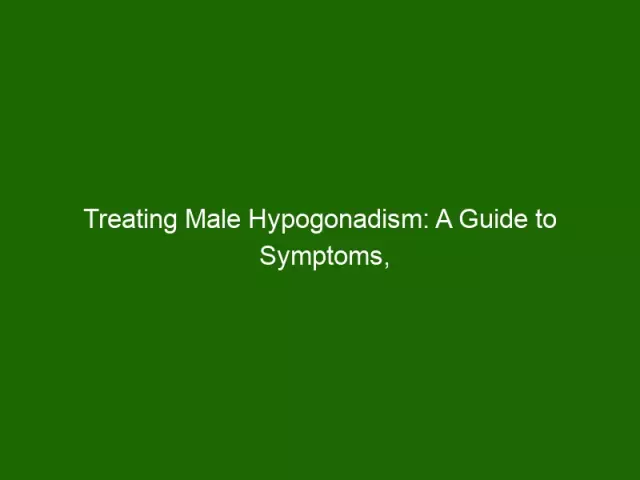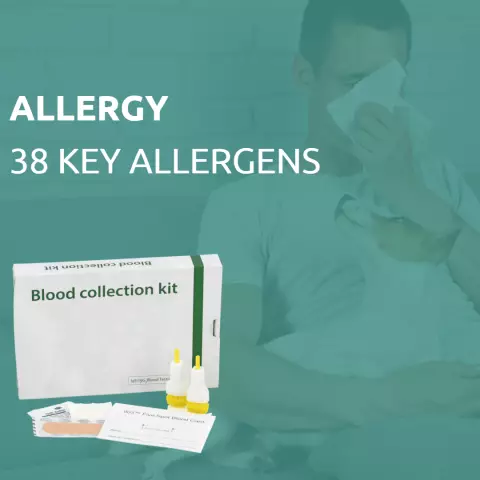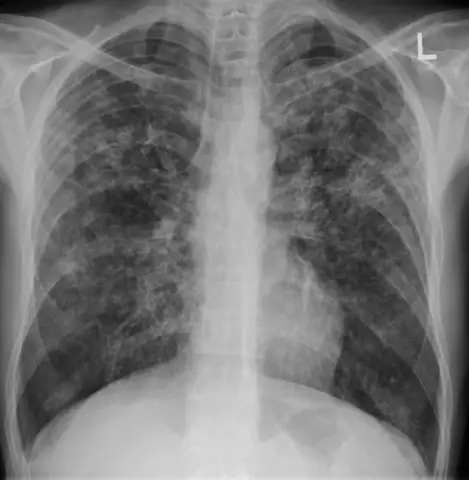- Author Rachel Wainwright [email protected].
- Public 2023-12-15 07:39.
- Last modified 2025-11-02 20:14.
Hypogonadism
General characteristics of the disease

Male hypogonadism is a disease caused by a deficiency of androgen hormones in the body. Depending on the etiology of the disease, it is customary to distinguish between primary hypogonadism and the secondary form of the disease (it is also hypogonadotropic hypogonadism). The primary form of the disease, characterized by an increased level of gonadotropic hormones in the body, is often called hypergonadotropic hypogonadism.
Pathology occupies a leading place in the prevalence among male diseases caused by functional insufficiency of the genital glands.
Primary hypogonadism in men
Primary hypogonadism may be congenital. The disease is manifested by testicular failure of the testicles or their complete absence (anorchism). Pathology manifests itself even during the prenatal period. A boy is born with a significantly smaller penis and an underdeveloped scrotum.
Further symptoms of congenital primary hypogonadism appear during adolescence. Young men with primary hypogonadism have the so-called "eunuchoid" type of skeleton, overweight, signs of gynecomastia (breast augmentation), and a low degree of hair growth.
Congenital primary hypogonadism is a common occurrence in the genetic syndromes of Klinefelter, Reifenstein, Shereshevsky-Turner, Noonan and Del Castillo.
Primary hypogonadism in men can also be acquired. It is this form of the disease that is the most common and occurs on average in every fifth man diagnosed with infertility.
Acquired primary hypogonadism develops as a result of inflammation of the seminal glands in:
- orchitis (inflammation of the testicles),
- vesiculitis (inflammation of the seminal vesicles),
- trim (inflammation of the spermatic cord),
- epididymitis (inflammation of the epididymis),
- mumps (mumps),
- chickenpox.
Cryptorchidism (undescended testicles into the scrotum) is also considered a possible provoking factor in acquired primary hypogonadism. Injuries or radiation damage to the testicles can provoke a functional failure of the male genital glands.
An idiopathic form of primary hypogonadism is also possible in men with an unexplained etiology of the disease.
With acquired primary hypogonadism in adolescence, the formation of secondary sexual characteristics does not occur. In adult men, the disease leads to an increase in body weight, decreased libido, erectile dysfunction and spermatogenesis, a decrease in the severity of male sexual characteristics and the development of infertility.
Secondary hypogonadism in men

Secondary or hypogonadotropic hypogonadism can also be congenital. It develops when the secretion of hormones by the pituitary gland and hypothalamus is disturbed. Secondary hypogonadism is associated with the following genetic diseases:
- Pasqualini syndrome
- Maddock syndrome
- Prader-Willi syndrome.
The development of hypogonadotropic hypogonadism is also not uncommon in craniopharyngiomas (tumors of the epithelium of the brain).
Acquired secondary hypogonadism develops as a result of complications of inflammatory processes in the brain. They can be provoked by meningitis, arachnoiditis, meningoencephalitis, encephalitis, etc.
With them, not only the function of the gonads suffers, but other pathologies of the hypothalamic-pituitary system also arise: disorders of thyroid secretion, thermoregulation, weight and linear growth.
Diagnosis of hypogonadism in men
Congenital primary hypogonadism is diagnosed if the testicles are not palpable in a newborn boy. To confirm the diagnosis, ultrasound of the pelvic organs and hormonal blood tests are used.
Typical signs of the disease are testosterone levels below normal, high levels of luteinizing and follicle-stimulating hormones in primary hypogonadism, and a deficiency of the above hormones in hypogonadotropic hypogonadism.
In the diagnosis of secondary hypogonadism in men, CT, MRI, and electroencephalography of the brain are used.
To find out the causes of hypogonadism of the primary or secondary form, genetic differential diagnosis of pathology is carried out.
Treatment of hypogonadism in men
In the treatment of hypogonadism, male sex hormone replacement therapy is used. With lifelong continuous administration of drugs, starting from adolescence, secondary sexual characteristics are formed in the boy. In most cases, it is also possible to maintain sexual function.
Treatment of hypogonadism provoked by cryptorchidism, mainly surgical. The recommended age for surgery is 1-1.5 years. The higher the position of the undescended testicle in the abdominal space, the earlier irreversible processes occur in the tissues of the spermatic glands. They lead to acquired primary hypogonadism and infertility.
Treatment of hypogonadism of the hypogonadotropic form consists in the treatment of the underlying disease. Surgical or radiation treatment for hypogonadism is done for brain tumors.

The strategy of substitution treatment for hypogonadism of the secondary form depends on the degree of disturbances in the production of hormones by the hypothalamic-pituitary system and the age of the patient.
If there is no need to preserve the patient's sperm-forming function, the treatment of hypogonadism of the hypogonadotropic form is carried out with testosterone.
In young men and adolescent boys, a short course of testosterone therapy is used, and preparations of gonadotropic hormones are used to normalize spermatogenesis in hypogonadotropic hypogonadism.
YouTube video related to the article:
The information is generalized and provided for informational purposes only. At the first sign of illness, see your doctor. Self-medication is hazardous to health!






